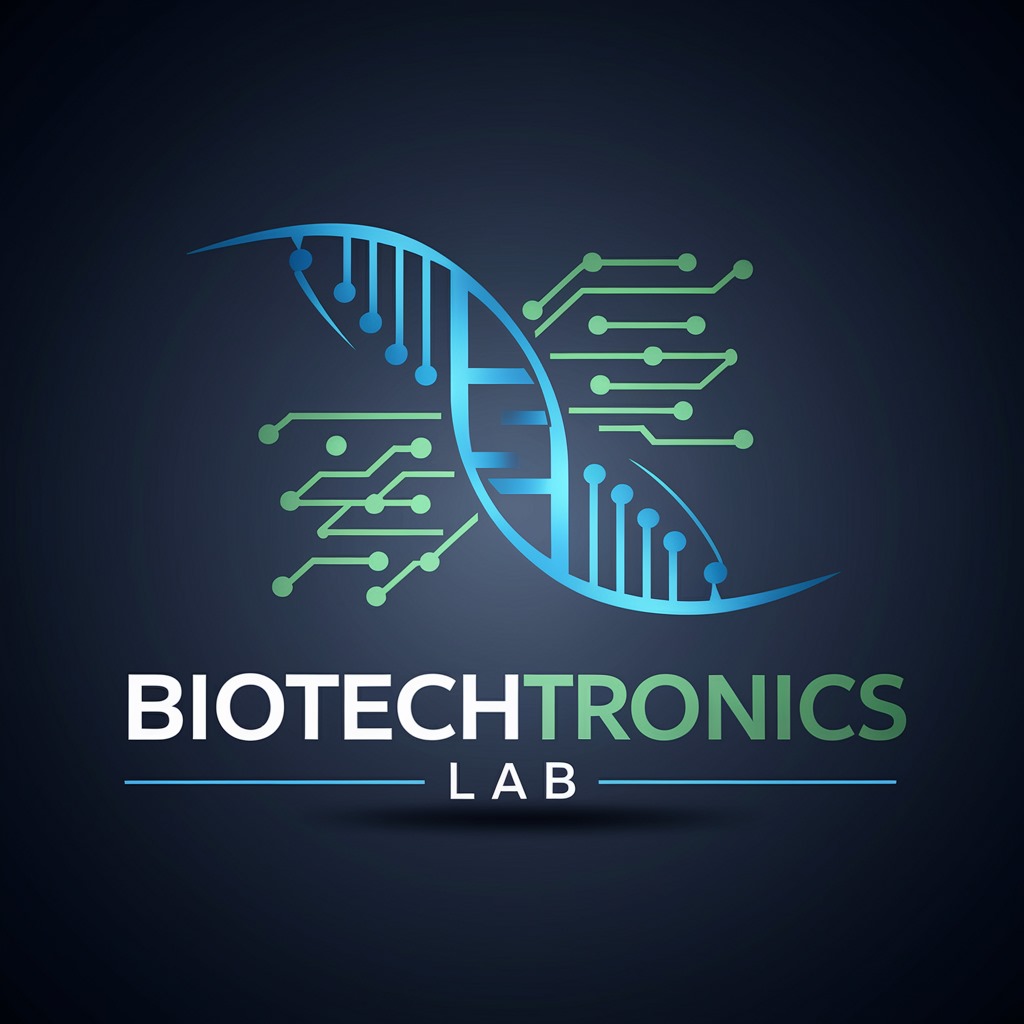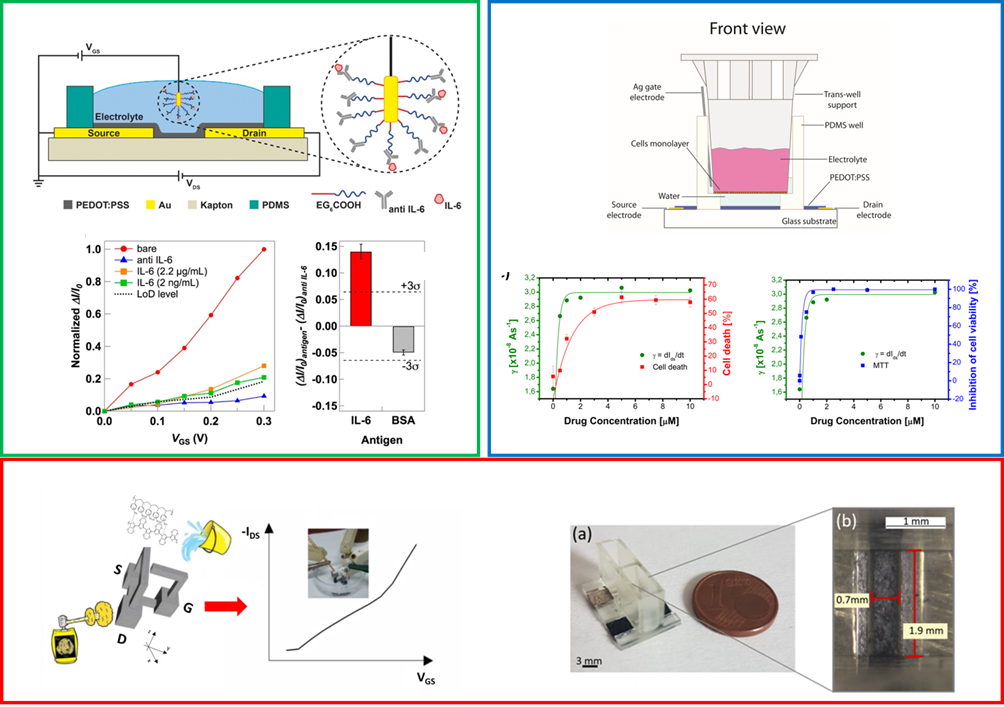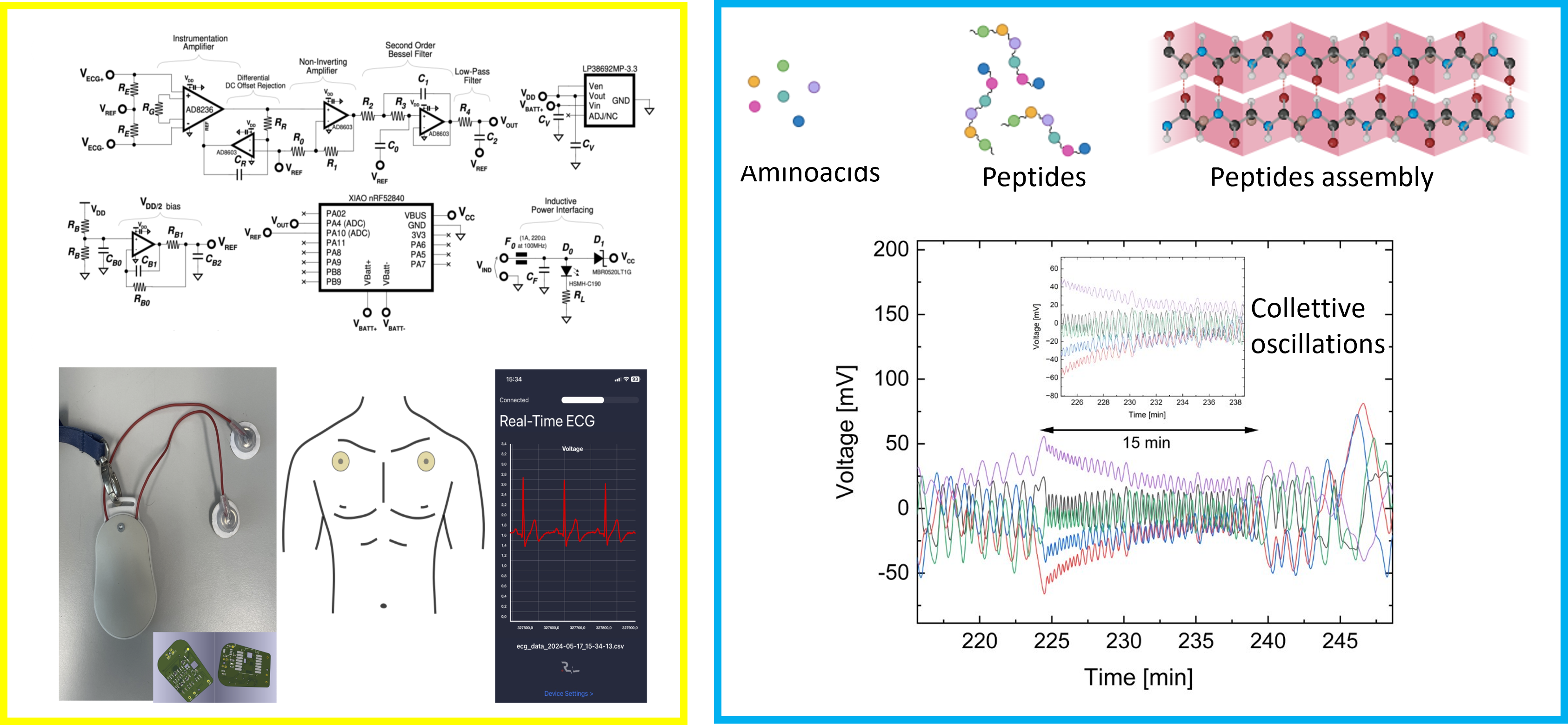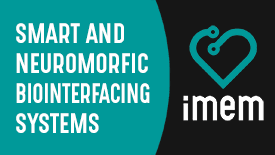 This activity is related to the development of intelligent interfaces and systems capable of implementing sensing and signal transduction from body parts of living beings, as well as interfacing these signals with computational elements (e.g., using AI tools such as machine learning) and actuators aimed at processing them. The innovation in materials with low or no environmental impact (following a "green chemistry" approach), featuring multifunctional properties and versatility in terms of integration into device architectures, along with innovative fabrication methods based on clean technologies, such as 3D printing from inks, pastes, and filaments, are all research topics that include applications in fields like healthcare and well-being, agri-food, and environmental.
This activity is related to the development of intelligent interfaces and systems capable of implementing sensing and signal transduction from body parts of living beings, as well as interfacing these signals with computational elements (e.g., using AI tools such as machine learning) and actuators aimed at processing them. The innovation in materials with low or no environmental impact (following a "green chemistry" approach), featuring multifunctional properties and versatility in terms of integration into device architectures, along with innovative fabrication methods based on clean technologies, such as 3D printing from inks, pastes, and filaments, are all research topics that include applications in fields like healthcare and well-being, agri-food, and environmental.
Our platform of choice for implementing the aforementioned transduction mechanisms is the Organic Electrochemical Transistor (OECT). OECTs are based on highly conductive polymers (typically the p-type organic semiconductor poly(3,4-ethylenedioxythiophene) polystyrene sulfonate (PEDOT:PSS)), which modulate their conductivity in response to a gate voltage due to doping and dedoping processes in the channel in the presence of an electrolyte solution. This peculiar behavior, combined with the intrinsic high sensitivity resulting from efficient ion/electron transduction, allows the design of “label free” biosensors capable of monitoring a wide range of biomolecules such as ribonucleic acids, proteins, drugs, and biomarkers for early diagnosis through functionalization of active interfaces, by decorating the active sensor interfaces with biorecognition elements such as enzymes, antibodies, aptamers and DNA. Additionally, they enable the monitoring of neuronal synaptic activity, cellular responses to physiologically or artificially induced stimuli, and the effects of specific drugs. OECT devices can be integrated into complex platforms such as 3D structures and Lab-on-Chip systems (e.g., Tumor-on-Chip) to conduct complex studies requiring continuous or real-time monitoring of biosystem activity under predetermined conditions.
We also study standard biosensor platforms, such as screen-printed electrodes and/or electrochemical cells, where working electrodes are appropriately modified to guarantee and eventually enhance bioanalyte recognition. Furthermore, another goal of our activity is to develop measurement protocols for these devices to improve response reproducibility and their reliability in real-world applications.

PEDOT:PSS, along with electroactive materials such as organic compounds (e.g., polyanilines) and organic-inorganic hybrids studied in our laboratories (e.g., based on combinations of 2D materials, natural/synthetic biopolymers, and conductive polymers like PEDOT:PSS and polyanilines), also serves as an impedance adapter. For this reason, devices based on these materials are suitable for in vivo recording biosignals (e.g., ECG, EEG, EMG...) while in direct contact with the human body. In this regard, we develop gel-free systems for acquiring biopotentials using self-adhesive skin electrodes based on biopolymers and electrodes printed with 3D printing equipments under direct-writing operation mode.

Our group also investigates peptide-based systems composed of short amino acid sequences. These systems are employed to implement methods for Unconventional Computation, as their aqueous dispersions exhibit collective oscillations that respond to external stimuli such as voltage pulses and UV-Vis radiation. Moreover, synthetic peptides assembled into thin-film structures are also used for the development of Peptide Electronics and related applications in gas sensing and biosensing.
Our current research objectives in this field include:
Investigating and expanding the range of bioapplications
Studying devices in terms of their operating principles and interfaces to enhance the performance (sensitivity, selectivity, response time, long-term stability) of biosensors when exposed to complex real biomatrices rich in interferents
Engineering biosensor architectures (e.g., miniaturization and/or array fabrication) for in vivo applications
Developing innovative and unconventional fabrication processes to facilitate integration into real-world applications
Developing green materials with multifunctional properties, ensuring versatility for diverse applications through simple compositional variations, along with their related synthesis and fabrication techniques.
| -Our publications and collaborations- |








